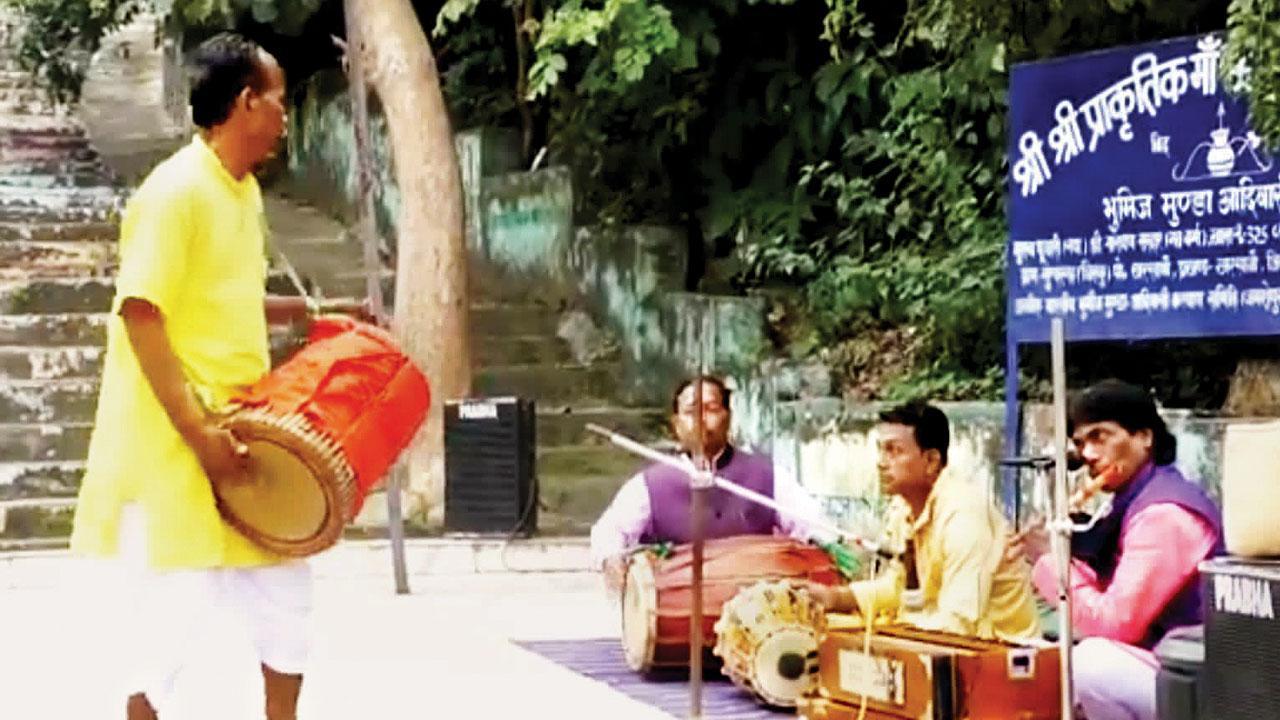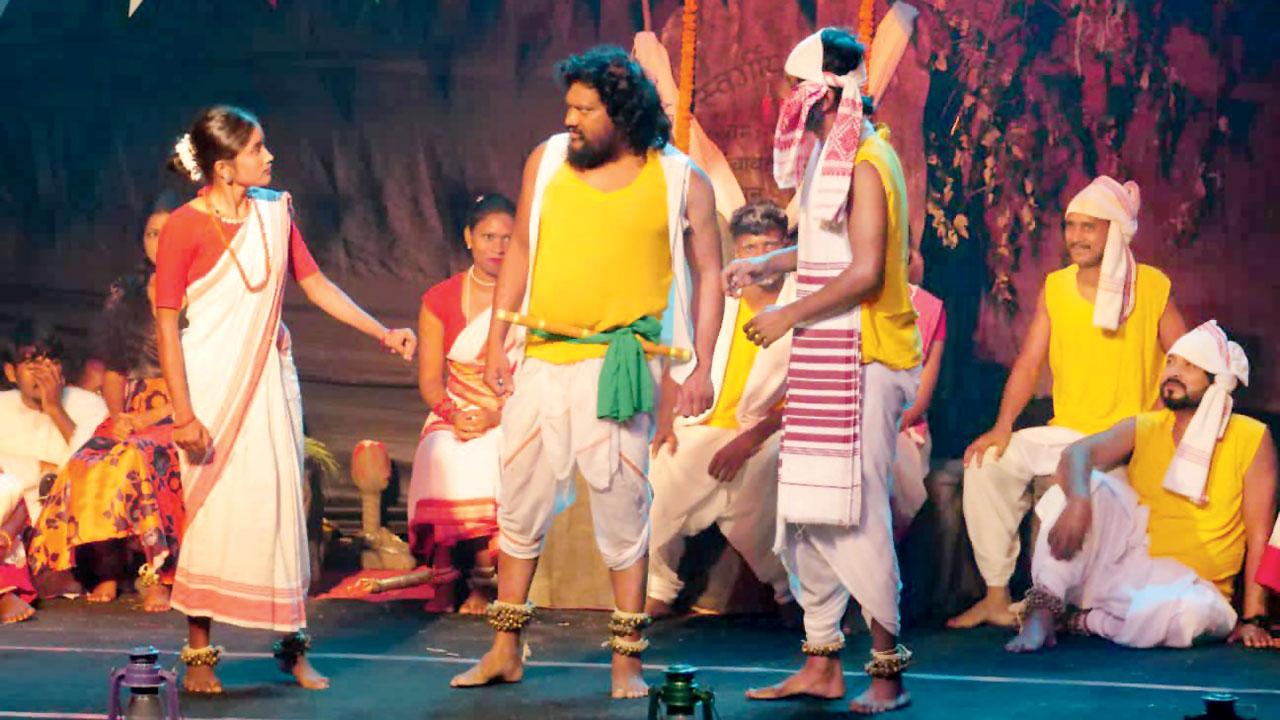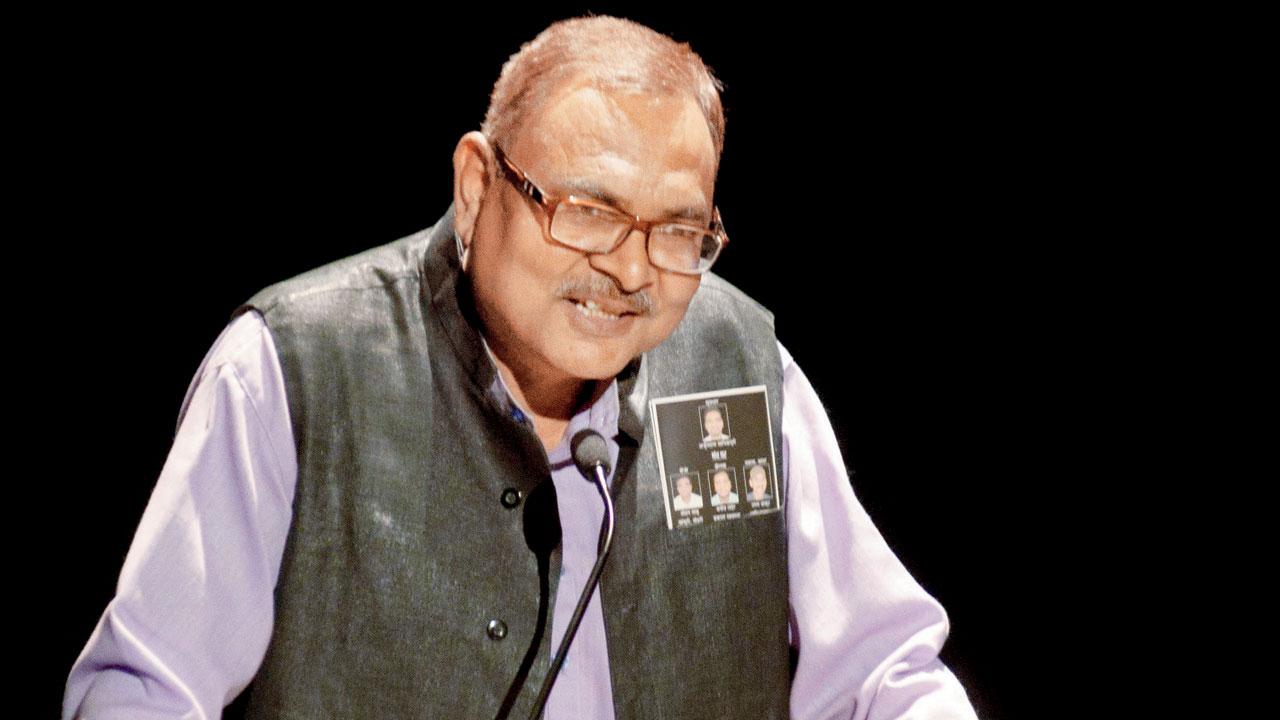A festival will celebrate lesser-known art forms from Jharkhand

A Kudmali Jhumar performance
In its 13th edition, NCPA’s Living Traditions will shine the spotlight on Jharkhand and present rare art forms of music, dance and folk theatre from the region, some of which will be performed in Mumbai for the first time. The two-day festival will showcase over 100 artistes from six troupes. “Earlier, as part of Living Traditions, we had presented folk art forms from Odisha, Chhattisgarh and Madhya Pradesh, among other states.
This year, while deciding on which state to focus on, we realised that Jharkhand has several unique forms that have not been showcased outside the region, as much,” says Rakesh Tiwari, Sangeet Natak Akademi award-winning folk exponent and curator of the festival. “Formed in 2000, Jharkhand is one of India’s youngest states; it is abundant in natural beauty and resources. The state is equally rich in its cultural heritage. Different tribes have their own sets of songs, dances and dialects,” the curator shares.
ADVERTISEMENT

A moment from the play, Gohaeer Jatra
Folk tunes
Two folk music forms Nagpuri and Kudmali will be performed during the festival. Nagpuri is a derivative of the Bhojpuri language, and is the main language of Sadan, an ethno-linguistic group of the Chhota Nagpur region, which covers some areas of Jharkhand and neighbouring states of Bihar, Chhattisgarh and Odisha. It is also the main language of tribal groups like Kharia, Munda, Bhumij and Kurukh. “The songs are usually about nature. Jal, jungle, zameen (water, forest and land) are the recurring themes; there are also songs about human emotions like happiness and sadness. The songs will be performed by Prithviraj Sinhdeo and group. The Sinhdeos hail from the royal family of the region,” Tiwari points out.
Until recently, only locally-crafted instruments were used for accompaniment. “Traditionally, folk artistes mainly used string instruments. They didn’t know much about scales or chords. Once a string was pulled, the song was performed based on that note. Later, instruments like harmonium and tabla were introduced. For example, earlier there used to be an instrument called chikara, which, over time, was developed into different versions of instruments like the sarangi and the violin. In the early days, an animal called goh (monitor lizard) was hunted down because the instrument was made using the skin of this animal, while another part was created from the hair of the horse’s tail. Today, hunting is prohibited, and horse carts, which were once part of everyday rural life, are also less common. Slowly, these instruments disappeared, and modern instruments like the harmonium have taken their place,” Tiwari elaborates.

A Ho dance performance by Uma Kumari and troupe
The other performance will be Kudmali Jhumar songs by Kamal Mahato and group. “Nature is a common element in songs for both forms though the languages are completely different. Regarded as an Indo-Aryan language, Kudmali is one of the several languages spoken in Bihar. While mainly prevalent in the Chhota Nagpur region of Jharkhand, it is also widespread in the border areas of Odisha and West Bengal. Though written in Bangla script, Kudmali literature is also available in other languages such as Devanagari and Odia,” according to Tiwari
Matching steps
Just like the songs, there will be two groups performing folk dances from Jharkhand. Chhau is popular, and was recognised by UNESCO as the intangible cultural heritage of humanity and has been performed in Mumbai before. Few are aware that while Chhau is practiced in Jharkhand, Odisha and West Bengal, there are three forms of this dance within Jharkhand — Saraikela, Kharsawa and Manbhum. Dildar Ansari and group will perform Kharsawa Chaau at the festival.

Rakesh Tiwari
Not as widely performed as Chhau, Ho dance, a celebration of the harvest season, is an integral part of Jharkhand’s folk culture. Holding each other, dancers move with the melody of bansuri (bamboo flute) in a semi-circular fashion. They match their steps to the beat of drums and percussion instruments. “Ho Munda are the scheduled tribe of Singhbhum district of Jharkhand. Men and women perform this dance together. Traditionally women dancers wore handwoven white cotton sarees made by local weavers. These days many teams wear colourful outfits. When these artistes performed with folk groups from other states, for example, Bhangra from Punjab, they thought that their costumes were bright and cheerful and hence, altered their costumes to look festive as well,” recalls 62-year-old Tiwari, who is also a folk dancer and a theatre practitioner. The dance will be performed by Uma Kumari and group.
 Subscribe today by clicking the link and stay updated with the latest news!" Click here!
Subscribe today by clicking the link and stay updated with the latest news!" Click here!








